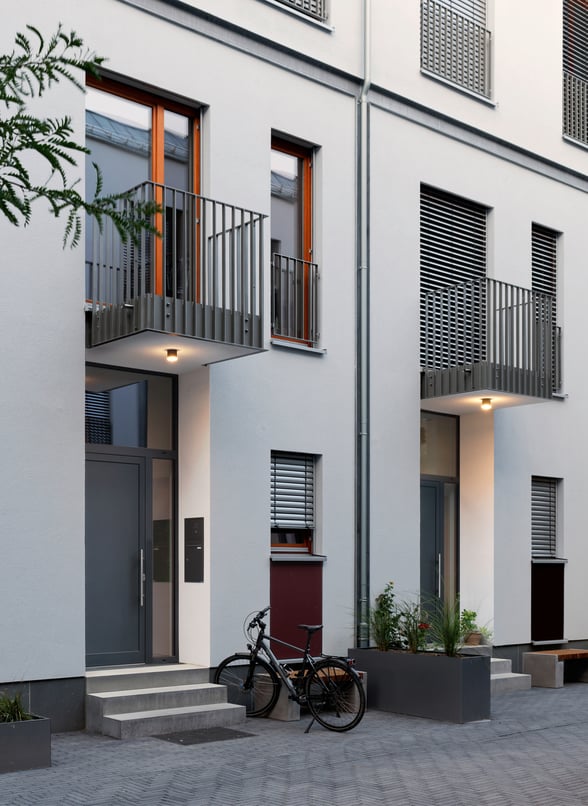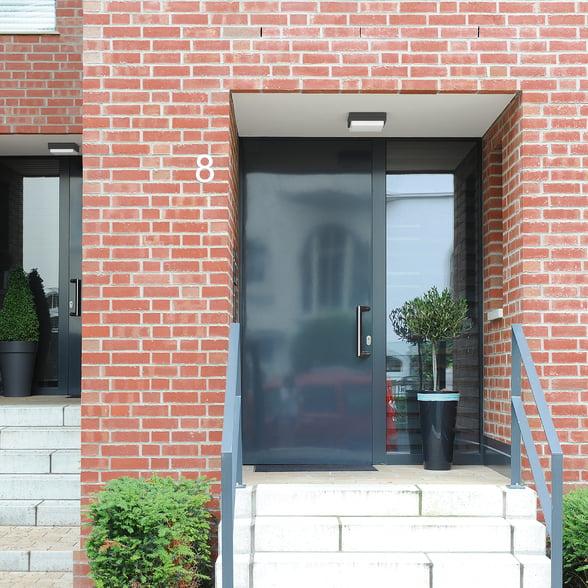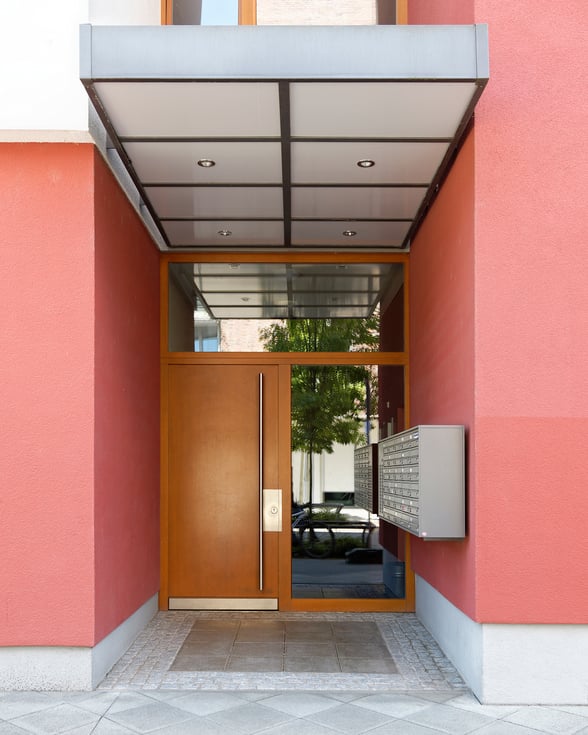
An inviting and well-organised area in front of the entrance combines function with an aesthetically pleasing overall appearance. Safety and user comfort are the elementary requirements for illumination.
The light in the entrance area must be significantly brighter than the illumination in the surrounding area – in addition to the inviting effect and the visual guidance, a well-lit entrance enhances the feeling of safety. Potential trip hazards are highlighted without glare.
Checklist: Lighting design for the entrance area
- Avoid shadows by using a suitable type of light, light distribution and light points
- Use brighter light to guide users to the entrance – must be glare-free
- Highlight steps and possible trip hazards
- The door lock must always be clearly visible – even in the dark
- Doorplates and letterbox inscriptions must be clearly legible at all times
- The house number must be visible from a distance – the illumination of house numbers is mandatory in many regions already




Pay attention to shadows
The functionality of the entrance area as an architectural invitation to the building that is used hundreds of times a day is rounded off by the targeted use of light. Possible shadows cast by reveals, projections or the use of the entrance itself must be fully taken into account at the planning stage.



Make use of architectural details
Architectural details can be used for the installation of luminaires in the entrance area. Porches or roofs to protect against the weather can be useful for the placement of recessed and surface-mounted ceiling luminaires. Reveals and projections can accommodate ceiling luminaires or wall luminaires in surface-mounted or recessed versions.




Guidance
Unshielded light with an integrated house number or other useful information helps with orientation from a distance. In the case of several similar-looking entrances, the use of bollards is a good way to make the guidance clear and to enhance the entrance in an eye-catching way. Together with ceiling or wall luminaires, they give depth to the door and the area in front of it.




Control light according to needs
An intelligent light control system takes into account the decreasing use of the entrance during the evening hours by reducing the power accordingly. Motion sensors take over this task of demand management, reduce the impact on the environment and save energy.









